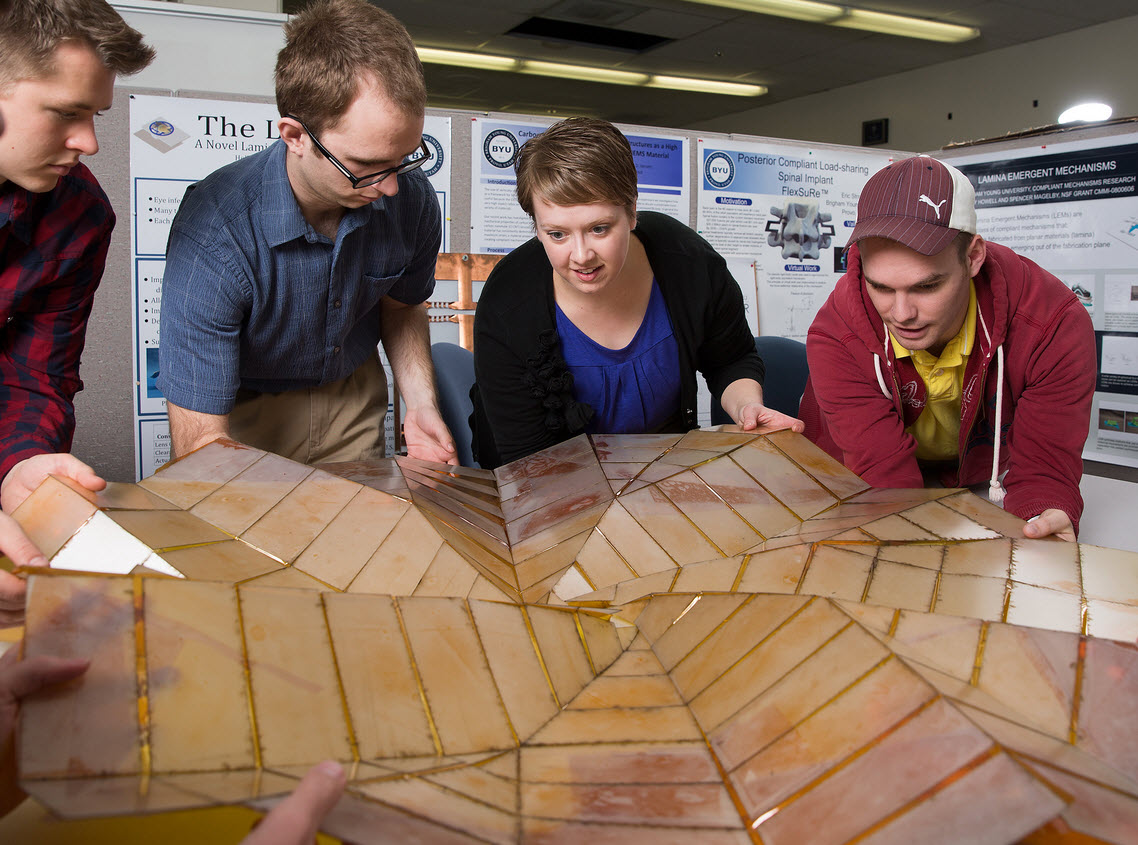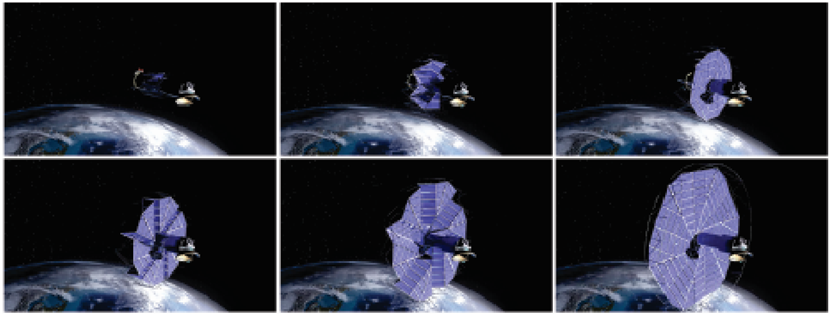November 3, 2013 – Brigham Young University (BYU) and NASA have combined with an origami expert to come up with a new way of folding larger solar arrays into rocket payloads to deliver more power to the International Space Station (ISS) and other spacecraft. Because the gravity well of Earth is so deep it is very expensive to launch a kilogram of payload into orbit. In addition the size of payloads is restricted to what can fit at the top of a rocket launcher.
So Robert Lang, the origami guru, worked with the BYU engineers on a solar array that could be folded into a space 2.7 meters (8.86 feet) in diameter, and when unfolded could extend to 25 meters (82 feet) and produce 250 kilowatts of power. Compare that to the current ISS solar arrays which generate 84 kilowatts and you can see why a compact design-delivery system would be highly valued.
Of course folding a photovoltaic panel isn’t the same as doing origami folds with paper to make a crane. For one thing the panel materials are much thicker than paper. So two problems needed a solution – the material choice as well as the fold design. The BYU team came up with a material, folding and assembly strategy that led to the creation of a demonstration model 1/20th the size of a fully deployed photovoltaic array. Watch the YouTube demonstration to see how they accomplished their origami-based solar panels.










